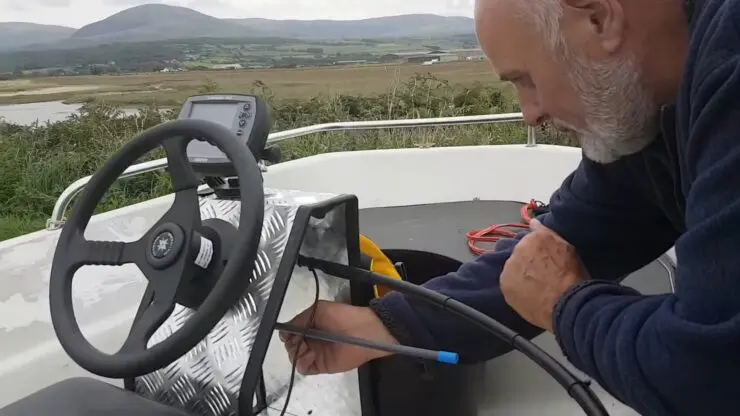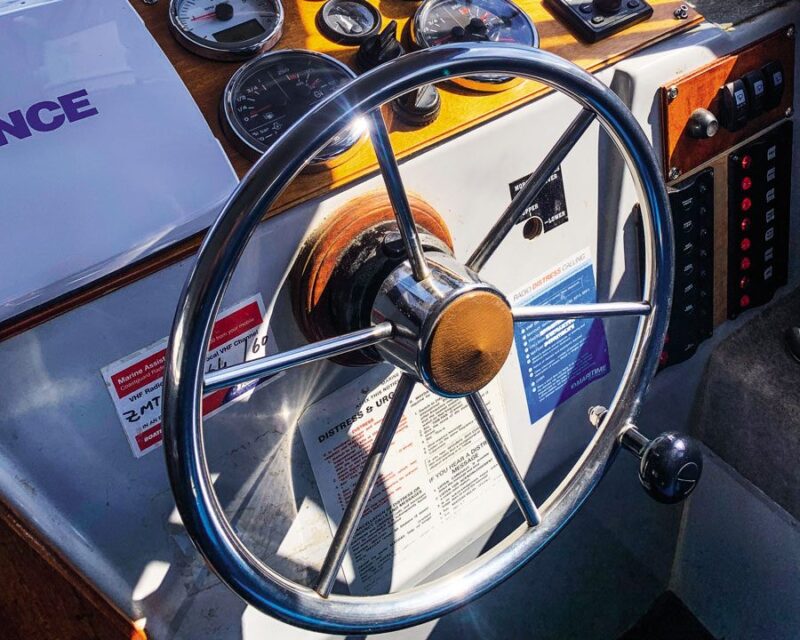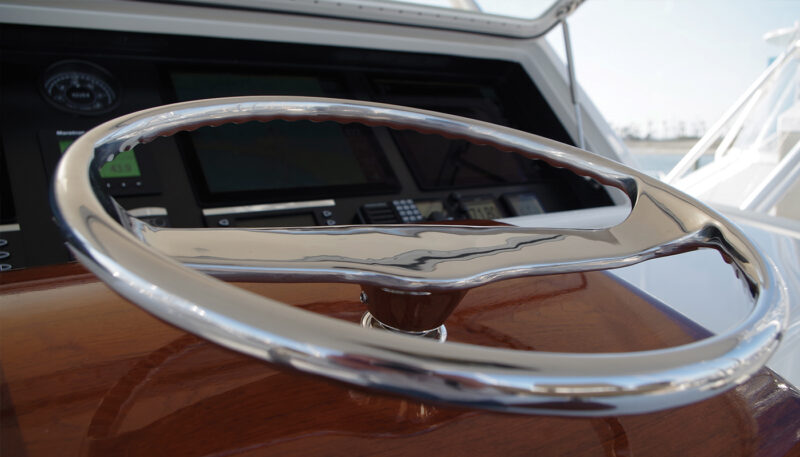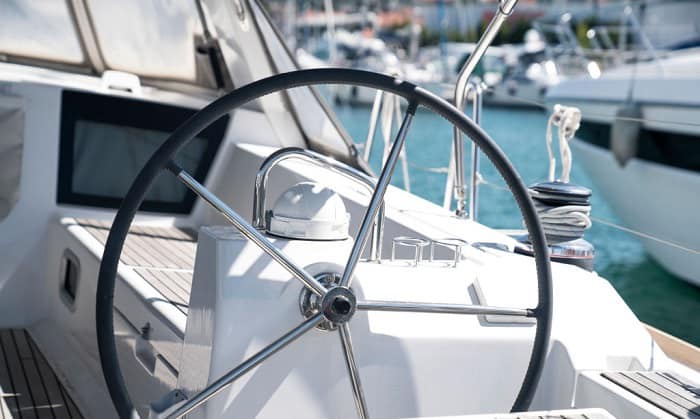Gone are the days of the basic mechanical systems used in boat steering. Thanks to technological breakthroughs in the marine industry, auto boat steering systems have now become the norm.
These are pretty much the same as the power steering systems built in cars, and they offer a lot more comfort and ease with which you can maneuver a boat. Keep reading this article, as we’ll be telling you all there is to know about auto boat steering systems and how they work.
Boat Steering System Types

It’s time to discuss the four major steering systems used in marine vehicles. These systems vary in set-up and functionality. Let’s take a look at them one by one.
1. Mechanical Steering System
This is the simplest steering system found in boats. It works with the aid of a cable that is connected to the engine of the boat, which is in-turn controlled by moving the boat’s steering wheel.
The part of the boat that carries the engine and steering controls is called the helm, and with the aid of the cable, it is the mechanism that allows you to steer the boat as you wish.
The mechanical steering system is ideal for a first-time boat owner. This is because its installation is very easy, and maneuverability is quite simple with a regular steering wheel.
2. Rack And Pinion Steering System
Similar to the mechanical steering system, the rack and pinion steering system also makes use of a cable connected to the wheel to steer the boat. However, the difference between them is that the connection of the rack and pinion steering system is far more complicated than the mechanical steering system.
With the rack and pinion system, the steering cable is installed with a steel plate that is designed with “teeth” on the side. It also comes with a rod that is installed by the steering wheel, and has a gear at the rear that sits in-between the teeth of the cable plate.
The gear turns when you turn the wheel, and this causes the plate to move, since its teeth are aligned with the gear.
We have to mention that there are two types of rack and pinion steering systems, which are the single rack and double rack. They both function the same way. It’s just that there are two cables in a double rack system, but only one in a single rack system. With the double rack system, the second cable gives the entire system a lot more sturdiness.
3. Rotary Steering System
The rotary boat steering system has some similarities with the rack and pinion system. However, it employs a different means by which the steering cable is held and moved.
With the rotary system, a toothed plate is not used to move the cable. On the contrary, the cable itself is designed with its own gear teeth, and is installed in a compartment attached to the gear.
Here, as you turn the wheel on the boat, the gear in the compartment also moves, and this allows the boat’s engine to have a smooth forward and backward movement. Rotary actuators are a good example of how this system works.
4. Hydraulic Steering System
The hydraulic steering system depends on hydraulics to maneuver the boat. It is built with several hydraulic valves and pumps, and it doesn’t have as many metallic components as the other three boat steering systems discussed so far.
Function Of Actuators In Auto Boat Steering

An actuator in auto boat steering is a component that converts an input signal into the physical motion of a boat.
Let us discuss in more detail, the functions of actuators in auto boat steering below.
1. Guidance
With an actuator installed on the chassis of a boat, the rams on its ends press against the steering linkage which helps with steering the boat. The sensors on the linkage are computer-assisted, and it triggers the actuator to apply the required amount of hydraulic assistance and steering pressure.
Actuators are IP rated so there is little to no chance of failure during operation.
2. Self Steering
In several four-wheel steer vehicles and marine vehicles, actuators can function without assistance.
In boats, the actuator is usually installed close to the back of the vessel, and it puts steering pressure on the outboard boat motor, which in-turn allows the motor to pivot with ease in the mount.
This function allows you to steer a boat with far less physical effort.
Safety and Precision

More than just control, these systems augment your boating experience with swift, responsive direction changes. Enjoy sleek turns and effortless maneuvers, even at high speed, enriching your journey and comfort of your passengers. The minimized manual effort spells less fatigue on long-haul trips, giving you more time to relish the open seas.
Environmental Advantages
But there’s more to auto boat steering systems than safety and precision – they’re an ally in fostering a sustainable boating lifestyle. Efficient steering slashes fuel consumption, curbs greenhouse emissions, and stretches your cruising range. Clever navigation also sidesteps unnecessary detours, reducing your carbon footprint.
The lower energy demand brought about by less physical effort contributes to preserving our environment. As sustainability takes the helm, auto boat steering systems make for a compelling choice for environmentally conscious seafarers. All aboard for a safer, smoother, and greener journey on the waves.
Conclusion
To wrap it up, auto boat steering systems have come to stay, and it will define how boats will be maneuvered in many years to come. They are easy to operate and safe, and regardless of which automation system you opt for, you are guaranteed a much better boating experience!

